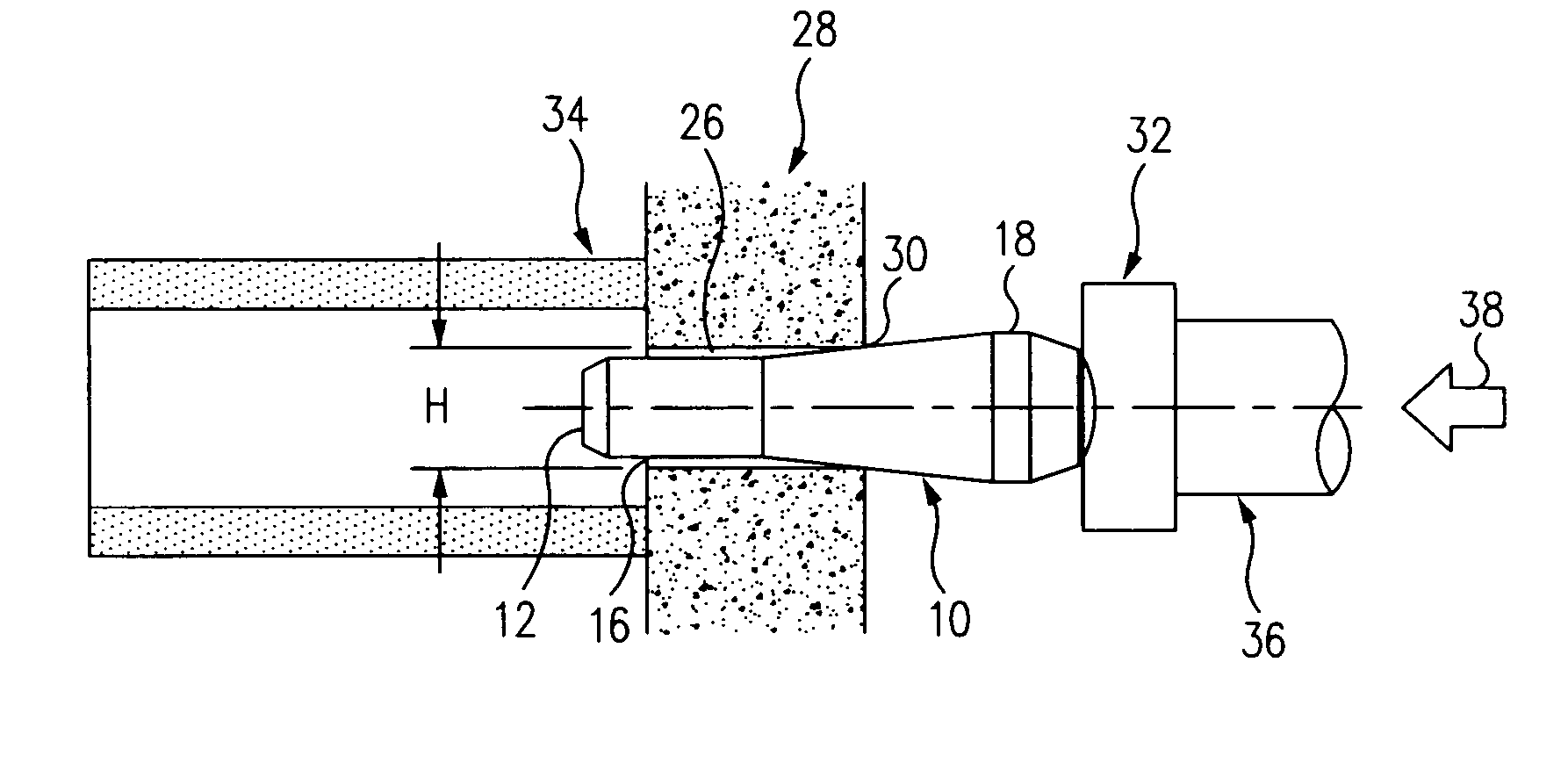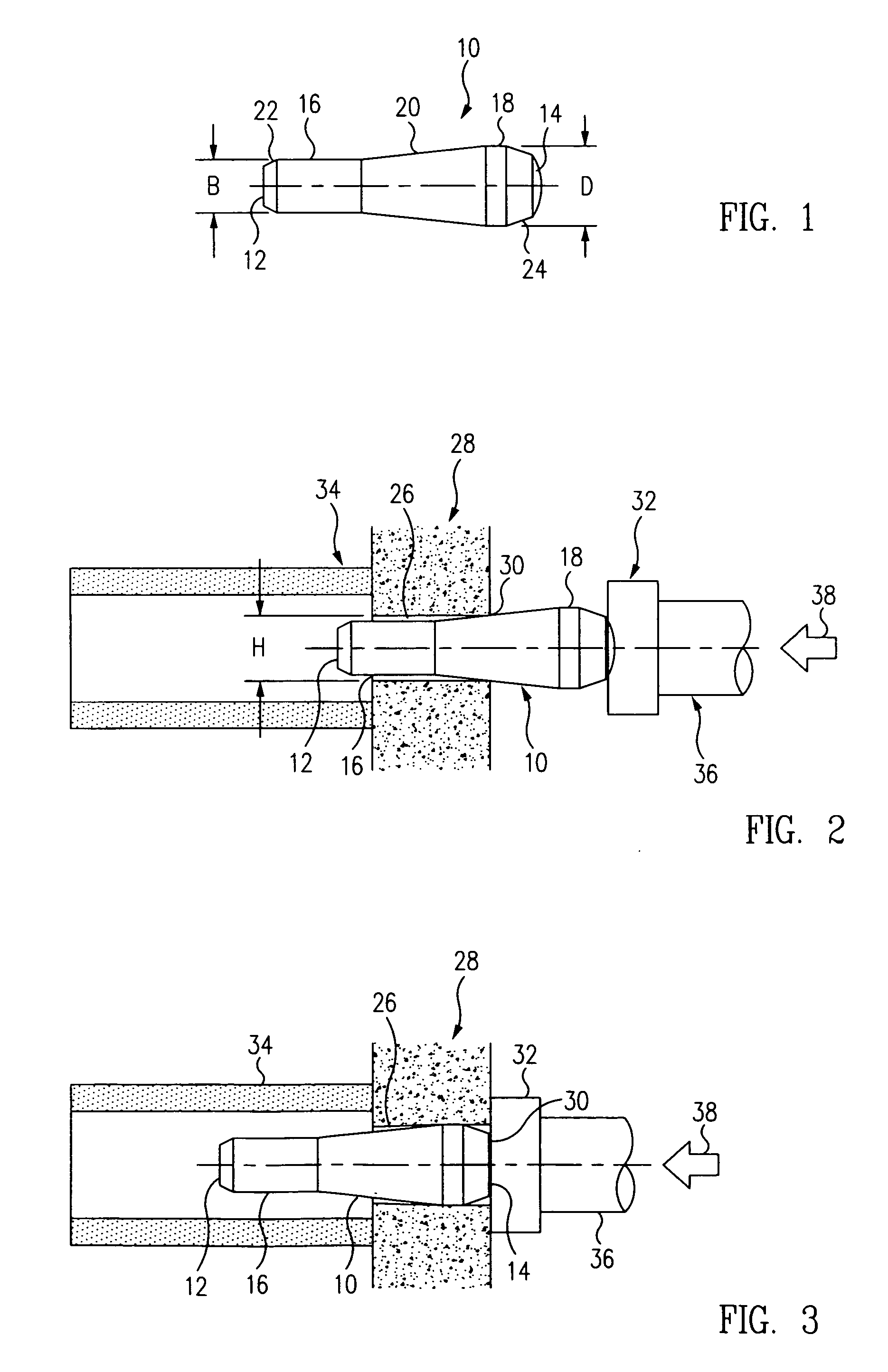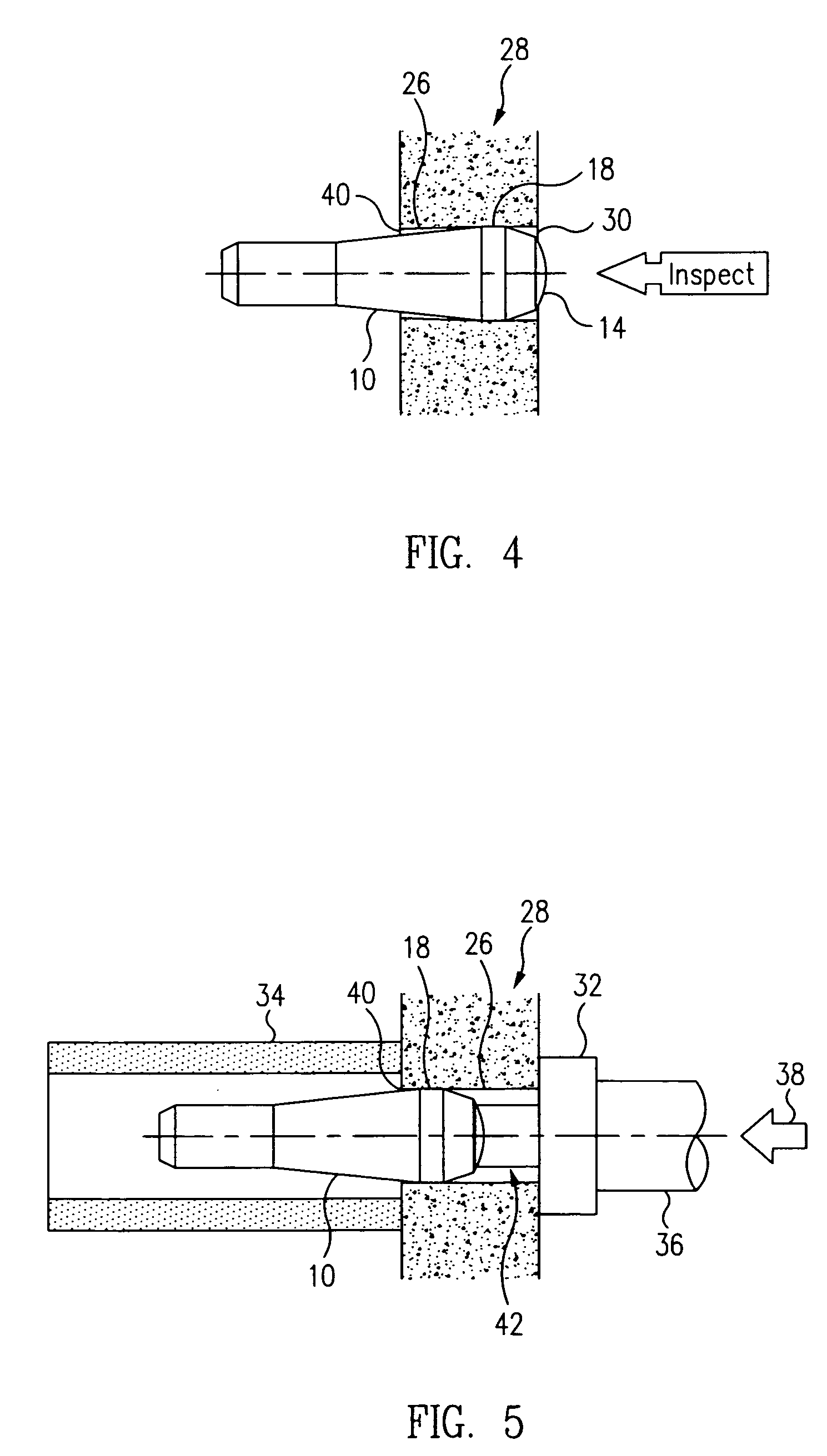Nondestructive verification of minimum tensile elongation of manufactured parts
a technology of manufacturing parts and tensile elongation, which is applied in the direction of measurement devices, instruments, scientific instruments, etc., can solve the problems of significant cost associated with machining and testing specimens, insufficient representation of bulk material properties, and material consumption, etc., and achieve the effect of easy sampling different parts in different areas
- Summary
- Abstract
- Description
- Claims
- Application Information
AI Technical Summary
Benefits of technology
Problems solved by technology
Method used
Image
Examples
Embodiment Construction
[0015] In accordance with an exemplary embodiment of the present invention, an inexpensive, disposable mandrel 10 and a few simple bench tool accessories are used in conjunction with a method to radially expand a test hole formed in a casting, forging, or other manufactured part by a prescribed amount to effect a circumferential strain at the edge of the hole matching minimum required elongation, or target strain, of the part. After the test hole has been radially expanded, the area in the vicinity of the test hole is inspected for radial cracks, which indicate that the part does not meet the elongation minima requirements. The apparatus and method can be used either to complement or completely replace existing standard tensile tests.
[0016] As illustrated in FIG. 1, the apparatus of the invention comprises an elongated, tapered mandrel 10 that is used to radially expand a pre-lubricated test hole that has been formed in the part to be tested. The mandrel has opposite, respective fi...
PUM
 Login to View More
Login to View More Abstract
Description
Claims
Application Information
 Login to View More
Login to View More - R&D
- Intellectual Property
- Life Sciences
- Materials
- Tech Scout
- Unparalleled Data Quality
- Higher Quality Content
- 60% Fewer Hallucinations
Browse by: Latest US Patents, China's latest patents, Technical Efficacy Thesaurus, Application Domain, Technology Topic, Popular Technical Reports.
© 2025 PatSnap. All rights reserved.Legal|Privacy policy|Modern Slavery Act Transparency Statement|Sitemap|About US| Contact US: help@patsnap.com



